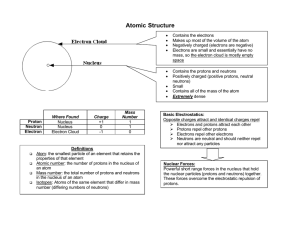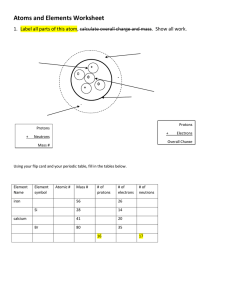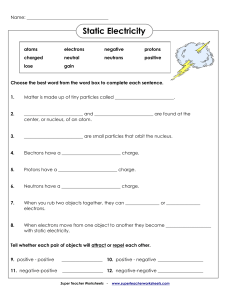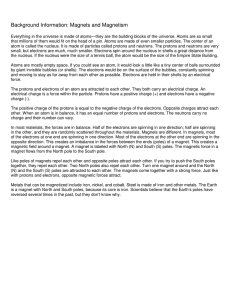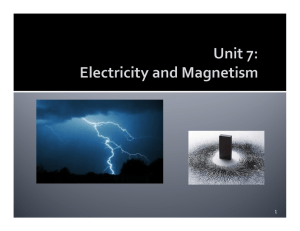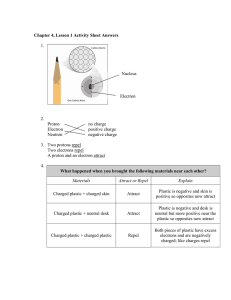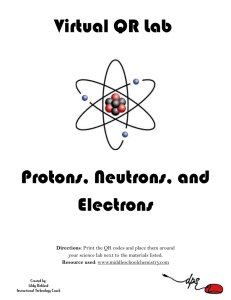The Next Generation Science Standards (NGSS)
advertisement
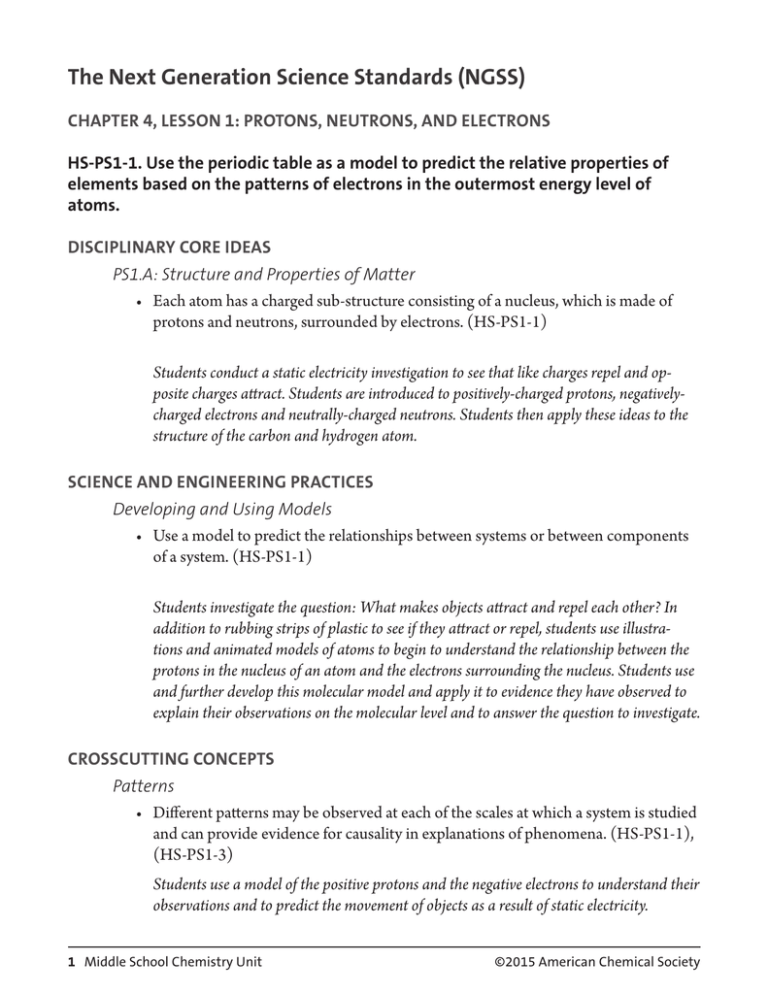
The Next Generation Science Standards (NGSS) CHAPTER 4, LESSON 1: PROTONS, NEUTRONS, AND ELECTRONS HS-PS1-1. Use the periodic table as a model to predict the relative properties of elements based on the patterns of electrons in the outermost energy level of atoms. DISCIPLINARY CORE IDEAS PS1.A: Structure and Properties of Matter • Each atom has a charged sub-structure consisting of a nucleus, which is made of protons and neutrons, surrounded by electrons. (HS-PS1-1) Students conduct a static electricity investigation to see that like charges repel and opposite charges attract. Students are introduced to positively-charged protons, negativelycharged electrons and neutrally-charged neutrons. Students then apply these ideas to the structure of the carbon and hydrogen atom. SCIENCE AND ENGINEERING PRACTICES Developing and Using Models • Use a model to predict the relationships between systems or between components of a system. (HS-PS1-1) Students investigate the question: What makes objects attract and repel each other? In addition to rubbing strips of plastic to see if they attract or repel, students use illustrations and animated models of atoms to begin to understand the relationship between the protons in the nucleus of an atom and the electrons surrounding the nucleus. Students use and further develop this molecular model and apply it to evidence they have observed to explain their observations on the molecular level and to answer the question to investigate. CROSSCUTTING CONCEPTS Patterns • Different patterns may be observed at each of the scales at which a system is studied and can provide evidence for causality in explanations of phenomena. (HS-PS1-1), (HS-PS1-3) Students use a model of the positive protons and the negative electrons to understand their observations and to predict the movement of objects as a result of static electricity. 1 Middle School Chemistry Unit ©2015 American Chemical Society



